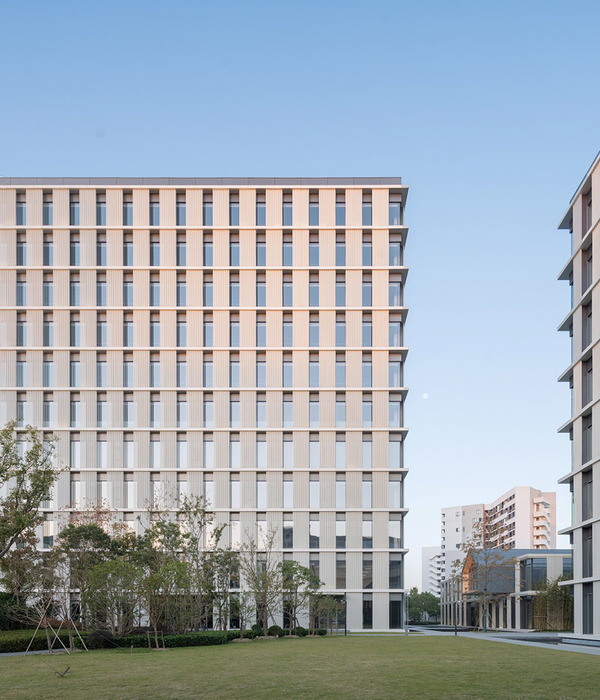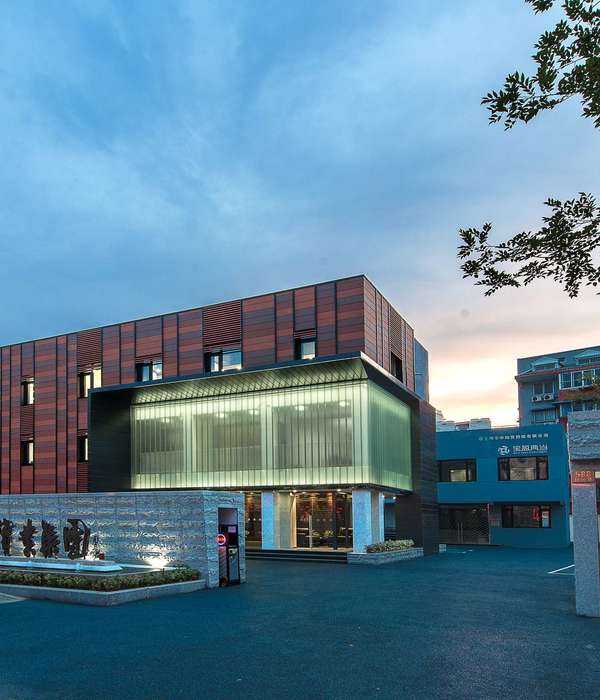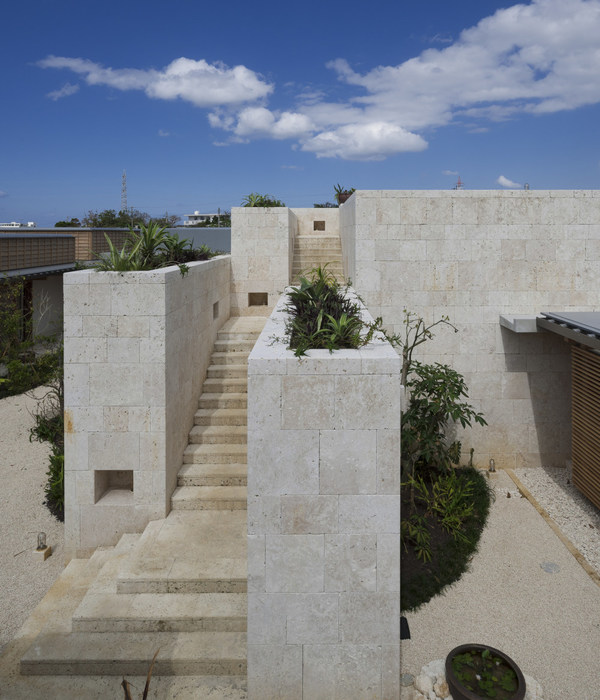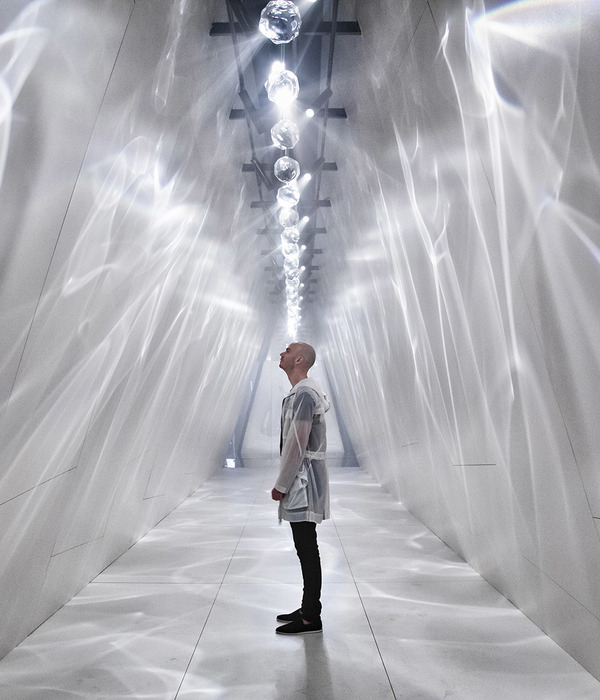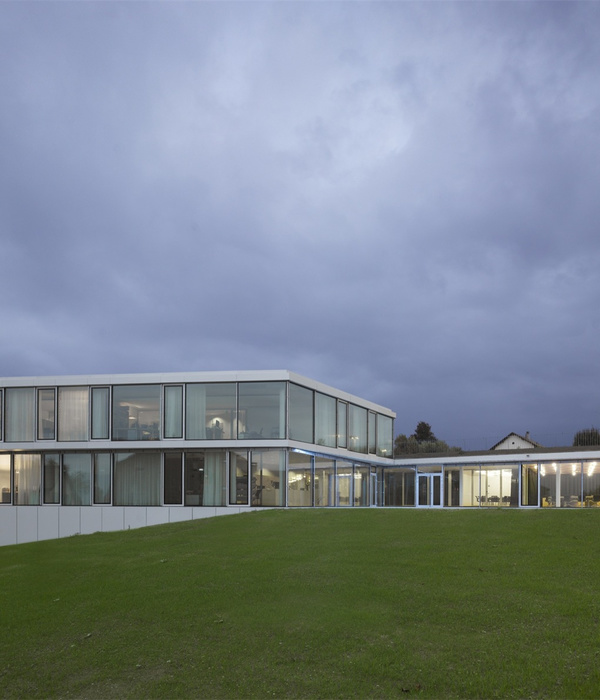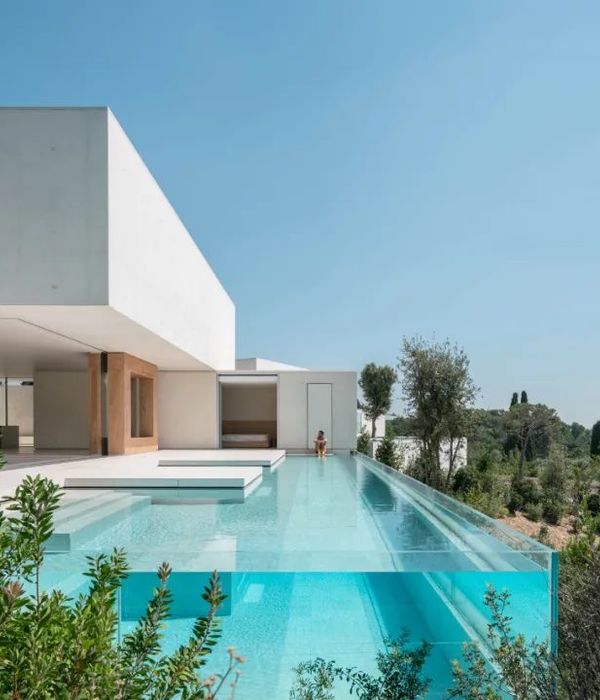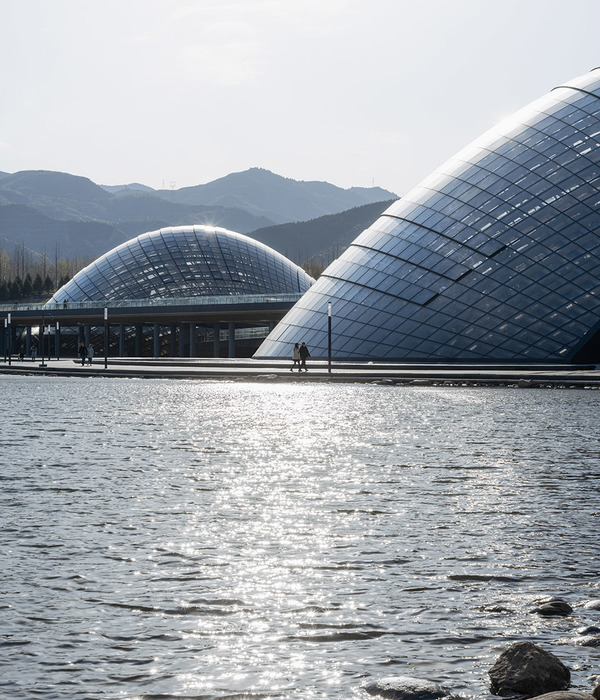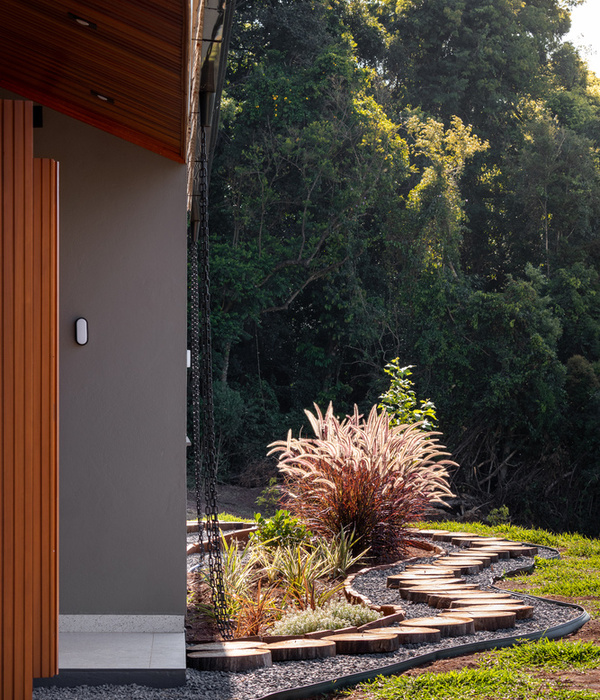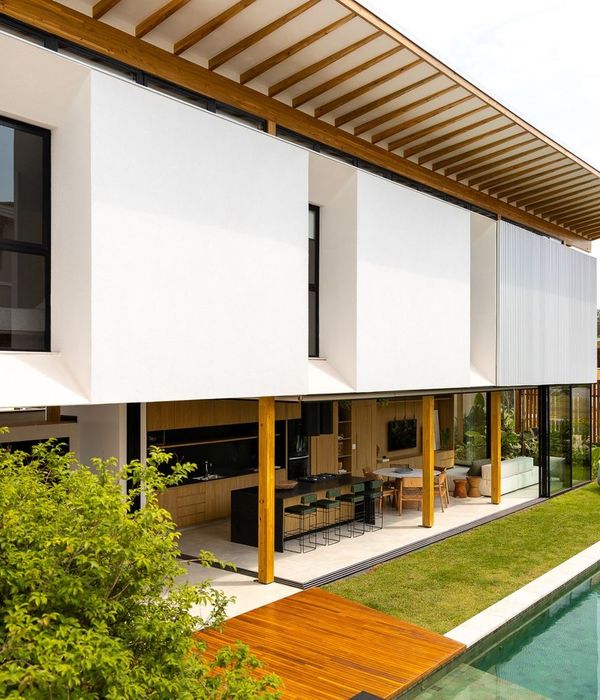Imagining a villa, one pictures a sprawling complex of buildings and land, echoing dynastic opulence. For this villa commission in a quiet village outside of Vienna, Austria, I was challenged with maximizing the volume of a difficult and narrow plot of land in order to create a modern living space for a two-generation family. The first impression of the construction is of a container as a living space. However, the eye is soon drawn to the discrepancies between the use of ninety degree angles and a slightly deviating complementary angle. The friction between the two angles, used both in the wall structure and the floor plan, can be felt as movement throughout the entire structure. From the intimate entrance to the large open plan living space, this interaction between the perpendicular and the oblique defines a certain perception that pervades the experience of the structure. The outlines and the façade of the new house are reminiscent of the unique and traditional craftwork of Viennese houses. In the last decades, this craftsman work has largely been given over in favor of the standardized use of polystyrene and external plaster.
Collaborators Landscape planing: Korbinian Lechner Architect - design stage: Ursula Knappl Construction engineering: Neli Rachkova-Anastassova Building physics: K2 Bauphysik
{{item.text_origin}}


